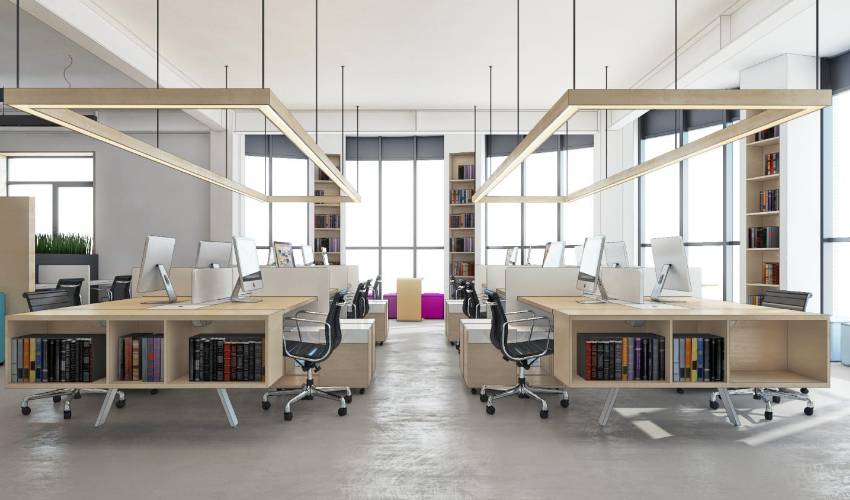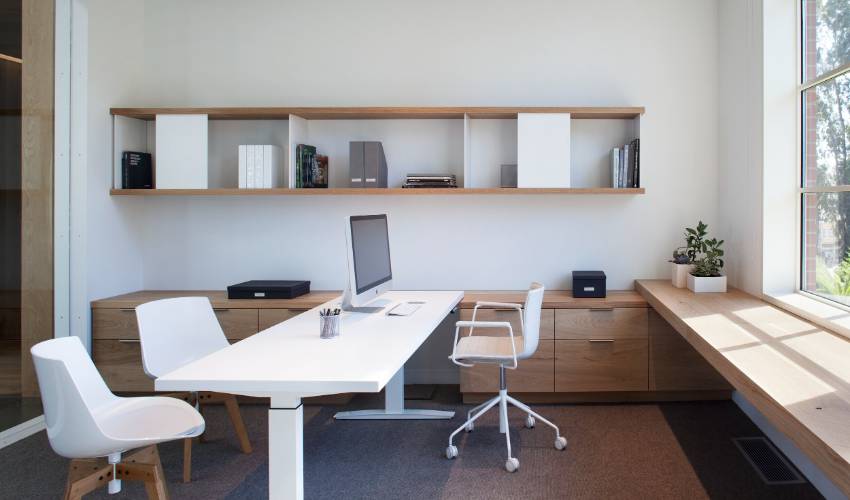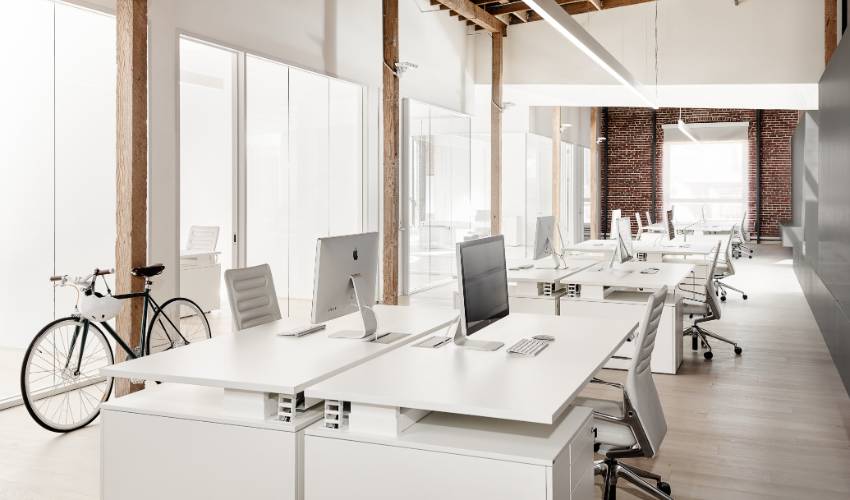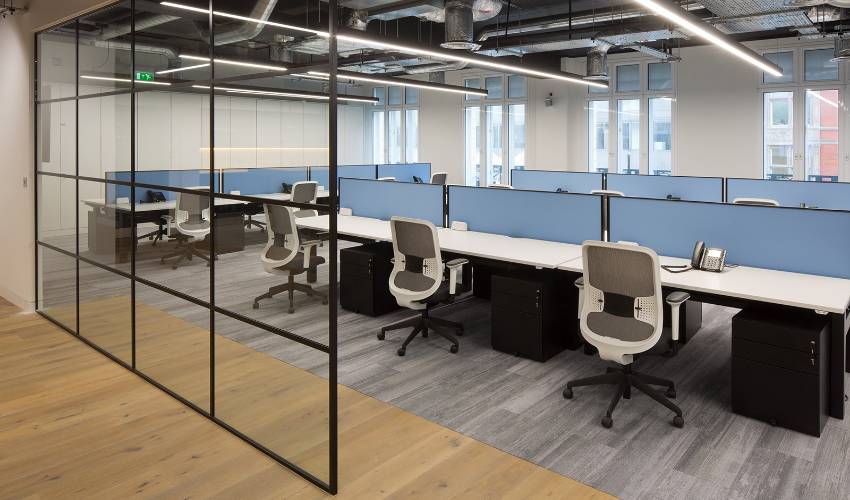The placement of office furniture is very important for maximizing functionality, comfort, and productivity. Office design that encourages collaboration, effective productivity, and general employee contentment. We’ll examine several factors to take into account while setting up office furniture for the best productivity in this tutorial.
Organize Your Office Furnishing For Efficiency

These suggestions by Wooden Doors Dubai can assist you in constructing a successful and harmonious workplace, from space planning and ergonomic concerns to designating zones and maximizing storage options.
1. Analyzing Your Space

Analyzing your crucial space is crucial before setting up your office furniture. Measure the space, taking note of any architectural elements like windows, doors, or electricity outlets. Consider how people will move across the office and the traffic flow. Decide which spaces, such as workstations, meeting rooms, storage, and common areas, require which furniture pieces. This consideration will serve as a foundation for smart furniture layout and space optimization.
2. Ergonomics And Comfort

Employee health and productivity are significantly influenced by ergonomics. To encourage good posture and lower the risk of musculoskeletal illness, make sure desks, seats, and other equipment are ergonomically created. Ensure the desks have enough space for legs, to place the computer monitor at eye level, and offer lumbar support in adjustable chairs. To increase comfort and efficiency, it’s important to encourage staff to customize their workstation with moveable monitor stands, footrests, and keyboard trays.
3. Workflow And Collaboration

Take into account the workflow and teamwork dynamics at your workplace. Arrange the furnishings to allow for easy staff interaction and movements. Workstations should be arranged to reduce distractions and encourage focus. Locate collaborative places in strategic locations, such as conference tables or breakout rooms, to promote cooperation and creativity. Utilize furniture that is easily reconfigurable and flexible to accommodate various workstyles and team projects.
4. Optimize Traffic Flow

Take into account how people move throughout your office. Reduce clogging by placing furniture in a way that promotes easy mobility. Furniture shouldn’t be placed in tight spaces or block doors or escape. An efficient traffic flow increases productivity and avoids inconvenience.
5. Creating Zones

To designate specific locations for various tasks, divide your office into zones. A reception room near the door, a quiet area for concentrated work, a collaborative place for meetings and brainstorming, and a leisure area for breaks are a few examples. Use shelving, furniture, or barriers to visually divide these spaces giving workers clues about each area’s function and purpose. This way, the work efficiency will be increased, and there will be less noise.
6. Optimizing Storage Solution

To keep an office clutter-free and organized, effective storage solutions are necessary. Consider putting tall cabinets or bookcases to make sure of the vertical space. Use file cabinets or transportable storage units that are simple to move and access. Provide each employee with a dedicated storage area where they can keep their things and papers. Create a system for classifying and labeling documents, supplies, and tools to ensure easy retrieval and cut down on time spent looking for them.
7. Natural Light And Lighting

Place the workstation close to windows to maximize natural light. It has been demonstrated that natural light enhances happiness, productivity, and general well-being. However, watch out for glare on computer screens caused by direct sunlight. Combine natural light with artificial lighting that illuminates the office sufficiently. To create a well-lit and cozy setting, combine accent, task, and ambient lighting. Employees can work effectively without experiencing eye strain by adjusting the illumination setting based on the unique duties carried out in varying places.
8. Arrange For Privacy

By paying attention to where furniture is placed, you can respect the desire for privacy in the workplace. To give workers a quiet environment for concentrated work, designated zones, or installed partitions can be considered. To maintain a positive work atmosphere, strike a balance between the necessity of privacy and the advantages of teamwork.
9. Incorporate Break Areas

Include spaces for relaxation or breaks where workers can take quick breaks and refuel. These spaces can be decorated with inviting furnishing like couches, coffee tables, and dim lighting. Breakout areas promote unwinding and can boost creativity and productivity when workers return to the office.
10. Consider Future Growth And Flexibility

Plan your office space to accommodate expansions and modifications in the future. Select furniture that is modular so that it may be readily enlarged or altered as needed. Choose room dividers or partitions that can be moved around to accommodate changing needs. Think about making an investment in furniture systems that can be altered to meet various functions and team sizes. This forward-looking strategy makes sure that your office furniture arrangement will continue to be useful and flexible as your company expands.
Winding Up
It is important to carefully consider space, ergonomics, productivity, cooperation, storage, lighting, and future demands when setting up office furniture for maximum effectiveness. You may build a functional and comfortable workspace by conducting a space analysis, promoting ergonomic designs, establishing defined areas, maximizing storage options, utilizing natural lights, and considering flexibility. Consider incorporating workers in the process so that better furniture arrangements can result from their suggestions and opinions. By keeping these suggestions in mind, you can majorly increase productivity, encourage teamwork, and foster a peaceful environment that contributes to the success of your company.




